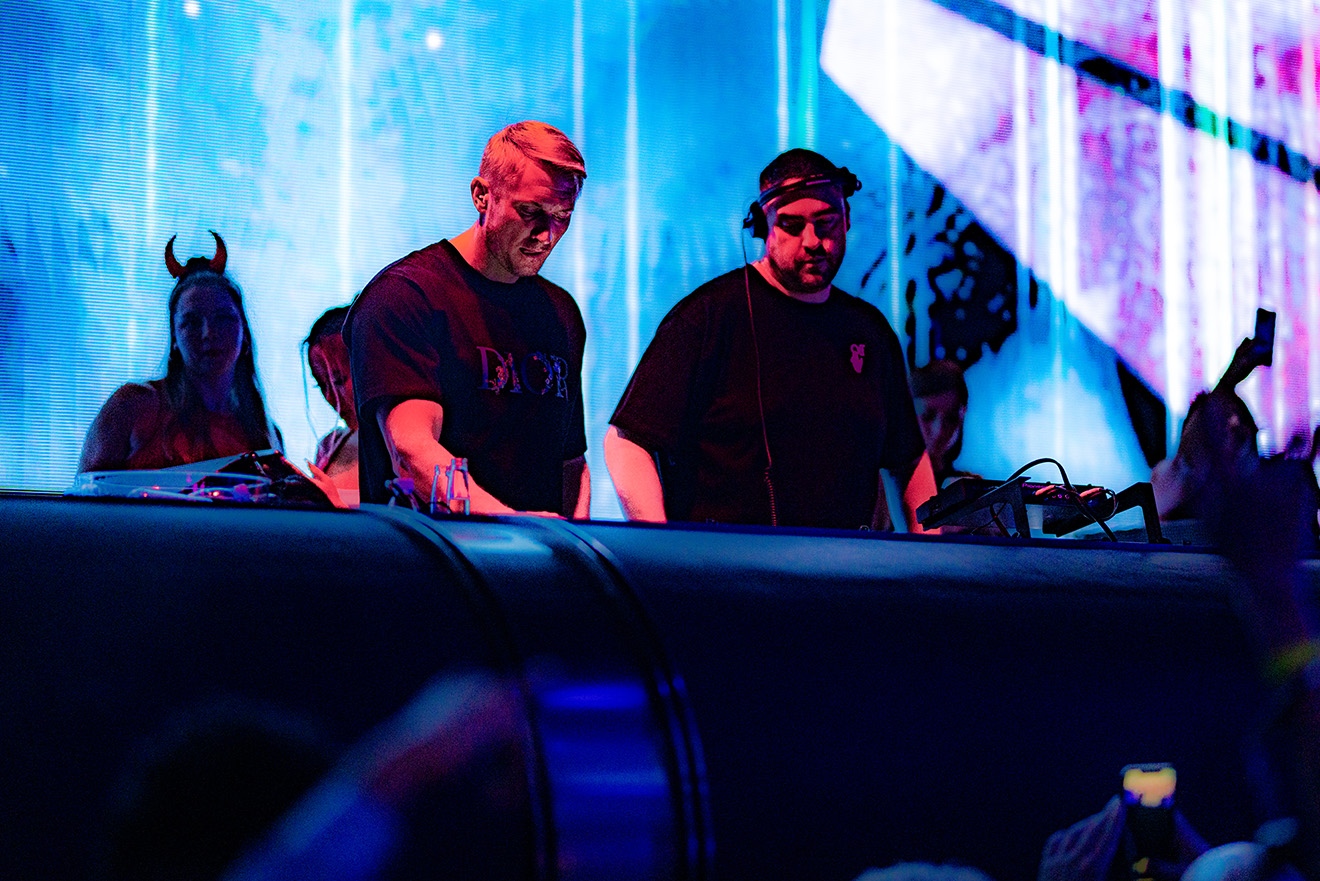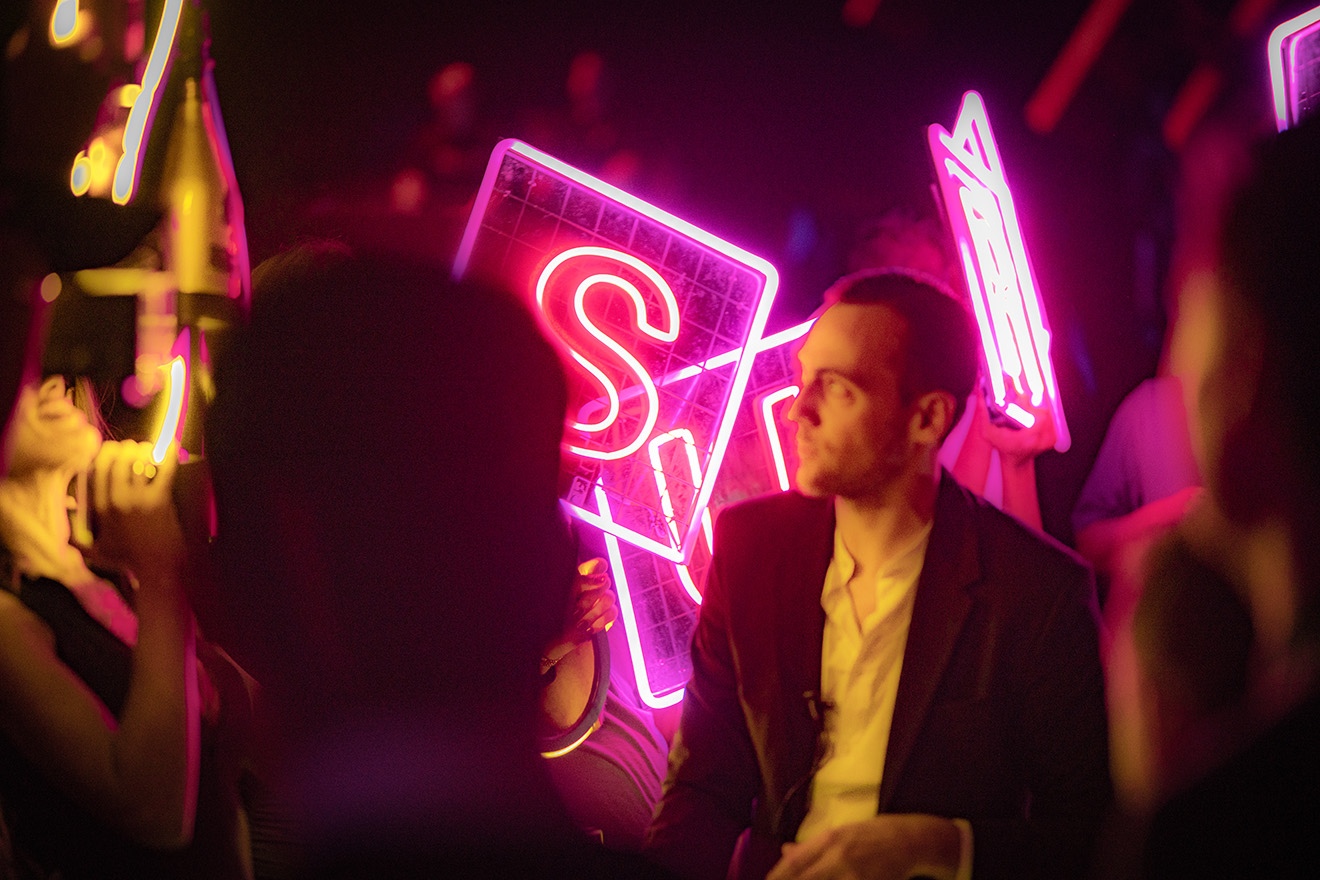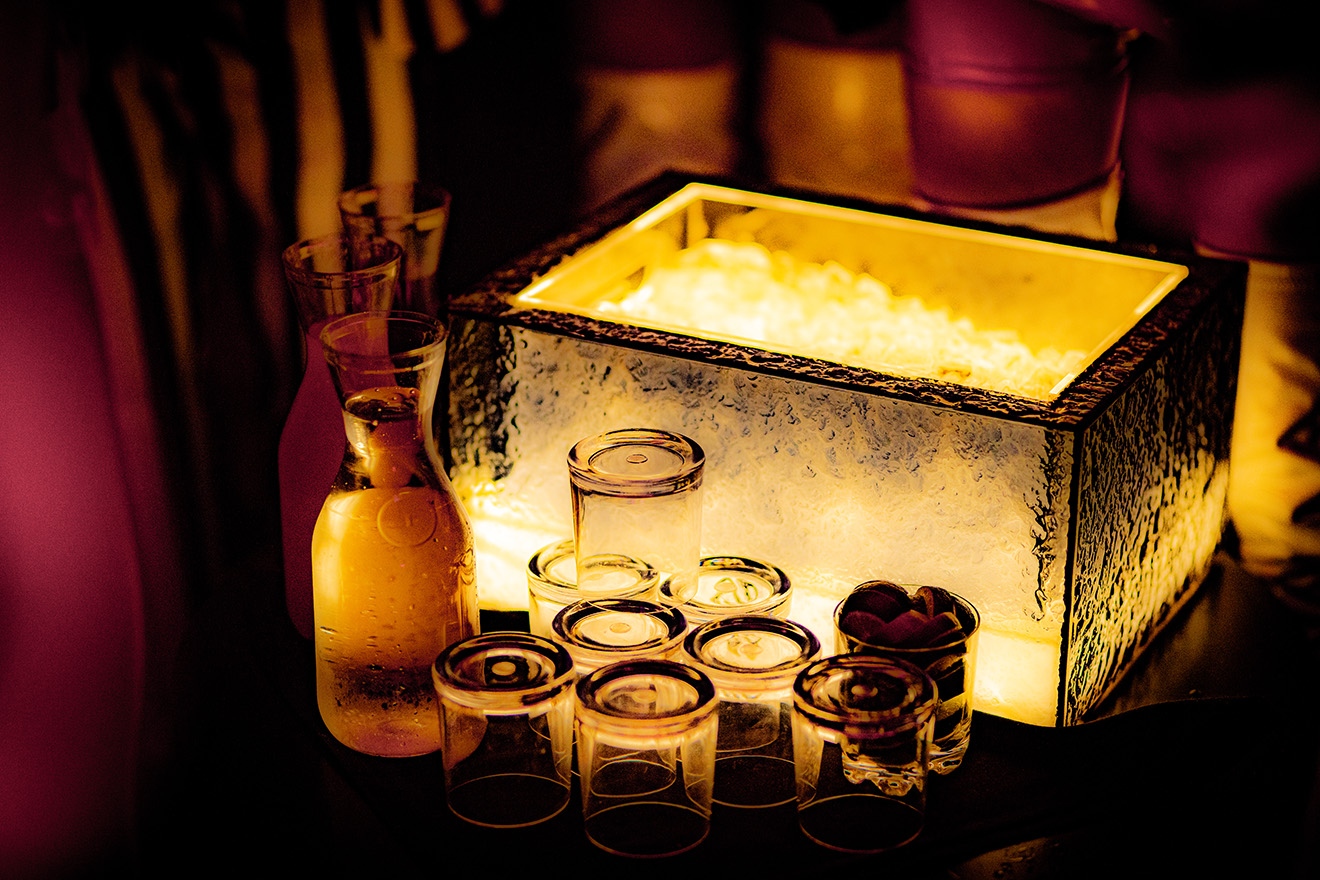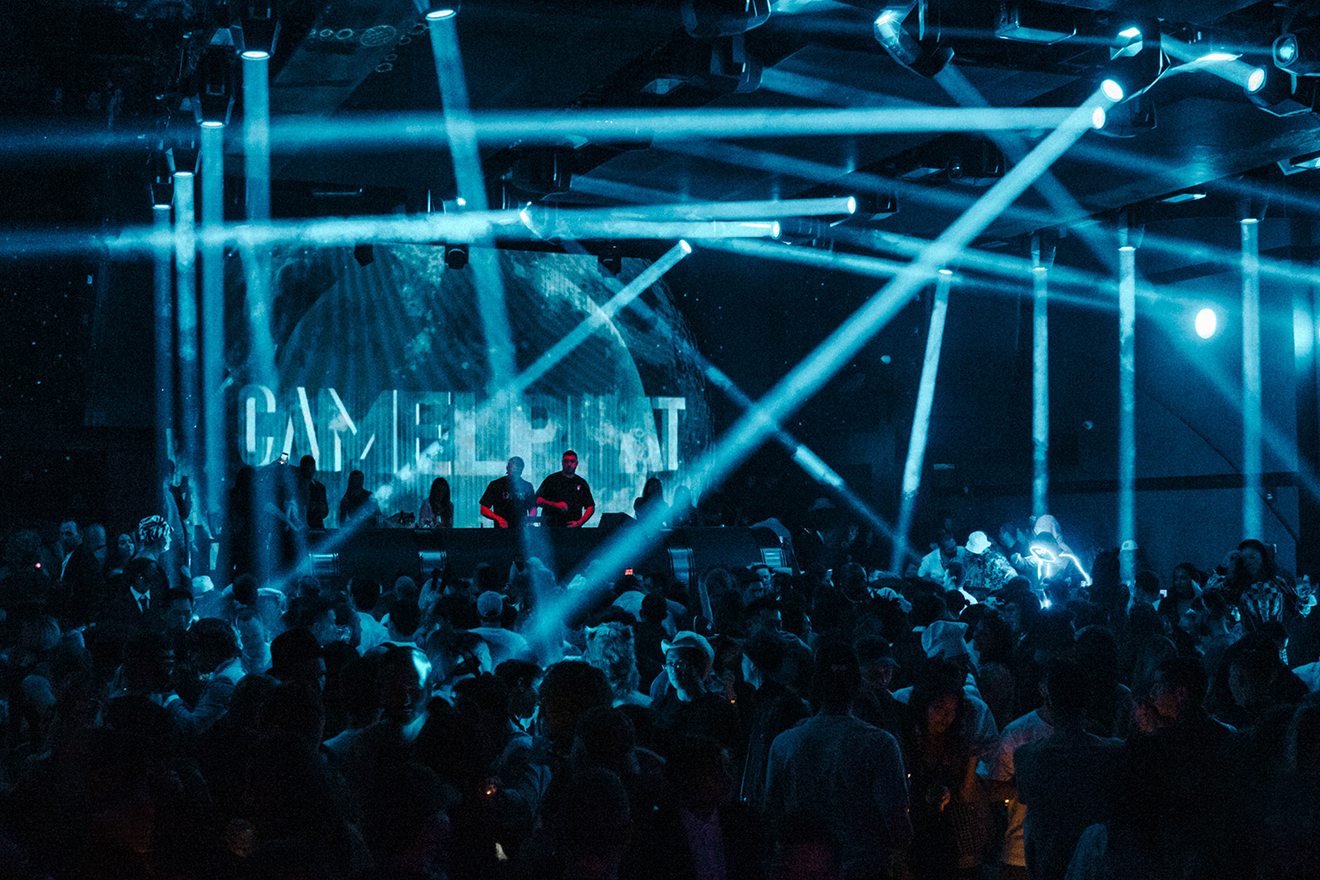 Features
Features
Review: New York club Nebula is bringing dance music back to Manhattan
After decades of gentrification and city policy has pushed culture out of Manhattan, a new dance music club has opened in the borough. David McGraw reviews the opening
One city block from the storied New York Public Library’s stone lions, a gothic façade hides midtown Manhattan’s new superclub, Nebula. The solemn exterior of the club belies its shiny inner nature: as you slip past the LED-emblazoned walls of the entrance to the central sleek black-box layout of the club, you’re met with the hulking soundsystem and enormous motorized video screens descending from the ceiling at different angles, creating cathedral-like arches over New York’s newest church of the dance.
Camelphat are headlining on the night before Halloween during the club's opening weekend, stepping up to the stage above a packed, sweaty floor, with revellers sporting a mix of usual club attire, inflatable costumes and business suits. A man wearing a fake muscles costume pumps his fist in the air next to an enormous shirtless guy with real rippling muscles, and nearby, in one of the table-service booths on the side of the stage, bottles of Dom Pérignon are brought in with sparklers as aloof clubbers lounge and try to act casual. The dancefloor has a discernible warehouse-feel: you might catch an elbow or two moving through the crowd, but the texture of the club becomes darker and more sparse as you meander elsewhere through the space.
Read this next: A new exhibit exploring New York's influential music history has opened
After an hour or so building up the energy in the room, punching tunes through a powerful, resonant soundsystem with lots of high-end, Camelphat drop 'Cola' and 'Panic', two tracks which have received considerable airplay over the last five years, but still feel potent in a setting like this, rattling the dancefloor as flashing lights burn through the foggy club.


The club itself is situated adjacent to the relatively serene Bryant Park and the NYPL, but is also a stone’s throw from Times Square in Midtown: a crowded, ugly nexus of tourism and garish light spectacles with blaring commercial advertising on all sides. The club feels split between worlds — it’s a Brooklyn warehouse oasis within Midtown Manhattan’s desert of dance music spaces, and it’s simultaneously a bottle service club with all the trappings of a much larger, high-tech concert venue. In essence, it's a modular attempt at catering to the varying expectations of nightlife in 2022, from the more discerning music fan to the partygoer focused on visual spectacle and social media documentation.
Read this next: How Instagram is changing the design of clubs and festivals
Tables fill most of the central floorspace, guarded by numerous bouncers, who constantly scan and filter the crowd, maintaining an unusual balance between bar-ticket attendees pushing through to the dancefloor, which is spacious and well-placed, and VIPs who sprung for tables. It’s an unusual layout for a club, but a creative way of solving what would normally be an oil-in-water issue with catering to bottle-service and bar-ticket holders. In a phone call, Nebula co-owner Yang Gao says the “club is designed, really, to flow seamlessly between the tables and the band support. So from the DJ's vantage point, when they're actually performing, they are only seeing a sea of people… it just looks like an enthusiastic crowd.”
“We pretty much wanted to have a mix of the dancefloor crowd meeting the table service crowd. There's not really a place you could have that in Manhattan [until now] because of the fact that everything's either too commercial, it's too dance-orientated, or it's too lounge cool,” says the club's other co-owner, Richie Romero, who says Nebula is catering to a niche in NYC nightlife that hasn't been filled until the club's opening. “We want to kind of do that hybrid of making it an ultra club, but also give it that VIP lounge experience, too.”


A space like this one in Midtown has a specific appeal to clubbers who can afford to live in Manhattan but who find themselves venturing to Brooklyn to see their favorite DJs. Romero, who also headed up prominent bottle-service clubs 1Oak and Up & Down, says that the draw of Nebula is that “a lot of the people that live in Manhattan… Ubers are so expensive right now. They don't want to spend $180 going back and forth to hear a DJ after they've bought either bottles, or they bought tickets. It lets them stay in the city, it's a lot easier. We could both live together. People that live in Brooklyn can go there; we have Manhattan. I just think it helps each other. I think it's friendly competition.”
At the end of Camelphat's set at the opening party, many of attendees hailing Ubers actually seem to be doing the opposite: going back to Brooklyn after seeing their favorite DJs. And thanks to a opening roster of line-ups, with Nebula partner Rob Toma of Teksupport working on musical programming and locking in heavy-hitters such as Luciano, Loco Dice, Adam Beyer Eric Prydz and Jamie Jones in the coming months, Nebula will likely continue to draw crowds from BK and other boroughs as well. Rony Seikaly, a former-NBA-star-turned-DJ who played on November 6, says: “It's always a joy to have a packed dancefloor grooving through to the end of your set, as was the case for me at Nebula. I think that's a testament to the audience the club draws, bringing in some of NYC's most devoted house music fans.”
Read this next: 24-hour "party districts" proposed in New York City
Leaving the club, some punters voiced issues with queueing but were impressed by the space. One clubber, dragging a cigarette trying to track down a taxi, says: “The club is sick. We got here at 12:30AM, there was a line down the block. We had tickets, and the line wasn’t moving. We had to try grease the bouncers’ pockets, and other people were trying to as well. The spent a lot of money on the inside, it's very nice, they put a lot of money into their soundsystems.”
Maybe the queueing issue was a first-week hiccup, but it’s a tough one to stomach considering the cost of tickets ranging from $50 to $80—not to mention the $26 mixed drinks at the bar. But Richie is definitely right about Nebula still being a better deal for Manhattan clubbers than trying to negotiate with rideshare surge-pricing back from a Brooklyn warehouse space during peak hours. And the margins that a club like Nebula operates on presumably plays a part in the cost, given the inherent soaring rent and overheads in Manhattan.

Back when rent was cheaper, Midtown Manhattan was once a hotbed of huge nightclubs, and examples abound every decade looking back. 90’s club kids look wistfully at their particular era of big superclubs, namely Limelight, Palladium and Tunnel. Even in the decades prior, examples like Studio 54 served as cultural centerpieces in the heart of New York, bringing together the art and fashion worlds of the day with queer communities, underground dance/disco fiends and celebrities.
Read this next: 5 times Studio 54 was the craziest nightclub on the planet
Recently however, Manhattan has faced a slew of club closures for a variety of reasons, in large part over the past two years because of the COVID-19 pandemic. But what has impacted the entire dance music community of New York for even longer is relentless, ubiquitous gentrification amid a boom in new residential real estate development, skyrocketing rent, and, arguably, a resultant cultural homogenization in high-end nightlife. As a result, the locus of dance music in New York has gradually crossed the river eastward to Brooklyn over the past few decades, moving initially out to Williamsburg, but increasingly further out into Bushwick following waves of gentrification and ever-increasing rent prices radiating outward from Manhattan. These days setting up an affordable, underground club in the central borough is, unfortunately, near enough impossible.

Nebula's pricing and top-tier bookings mean it isn't exactly rolling Manhattan back to the underground, nor is it trying to, but it feels like a step in the right direction, given how hard the last 10 years have been on nightlife in Manhattan. The club-owners wear many hats, have sorted through mountains of red tape to be able to use this space, and established a club mission to satisfy as wide an audience as someone could reasonably expect from a venue like this. It’s a far cry from the unconcealed hedonism of Studio 54 or other legendary Manhattan clubs, but it’s still a spot for fans of dance music to enjoy in a part of town where culture has literally been pushed outward and away by both gentrification and city policy.
Read this next: New York in 1984 was the time, and the place, dance music became a culture
Despite its location, Nebula doesn’t seem to draw any influence from New York nightlife history; its emphasis on A/V tech is firmly representative of dance music’s architectural zeitgeist these days. According to Gao, Nebula’s mission “is to give people a changing experience, and especially coming out of COVID, to feel something — being connected to something is very important for people that are going out.” And with all the technological and cultural changes that continue to take place, New Yorkers still seek the life-affirming experience of connection on the dancefloor.
David McGraw is a freelance writer and photographer, follow him on Instagram


